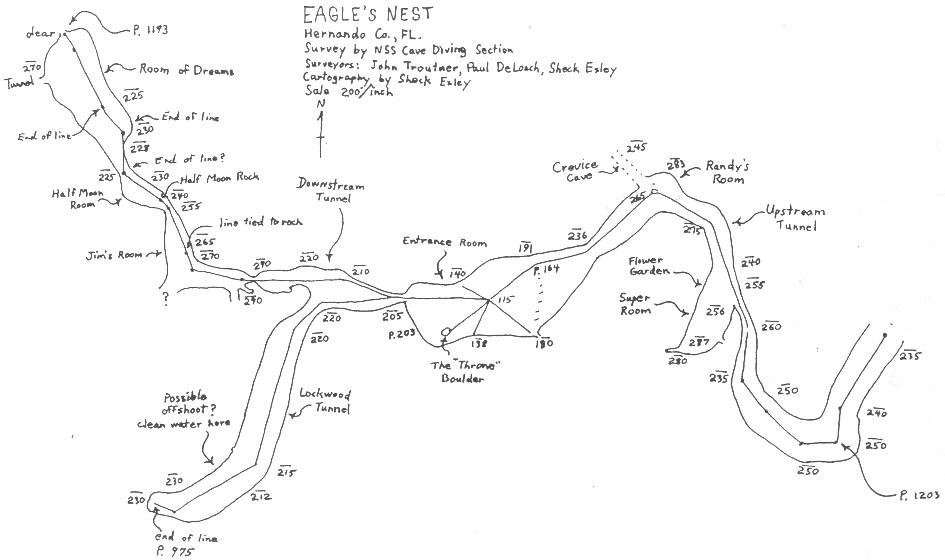Eagle’s Nest USA
Eagle’s Nest Cave is a remote sinkhole located in the Chassahowitzka Wildlife Management Area in west-central Florida. The sinkhole is shaped like a pond from the surface, but beneath the surface, it’s shaped like a sink with a long, rocky drain that descends into a system of underwater passages reaching 300 feet in depth. The cave is one of the most dangerous cave diving sites in the world, and at least 10 enthusiasts have died since 1981. The cave is known and respected around the world by all who dive water-filled caves. Divers must check in at an iron ranger at the entrance and pay the $3.00 daily fee to access the cave. The news of the deaths of two divers in 2016 prompted some locals to call for the cave to be closed to prevent further tragedy. The Eagle’s Nest Cave is one of the deepest underwater caves in Florida, and it presents daring divers with a unique challenge.
- Region: Florida
- Coordinates: 28.5554122,-82.6092834
- Depth: 315 ft
- Remarks:
- Type: Cave
Diving Pre-requisites
Diving into the depths of Eagle’s Nest is an advanced endeavor, and divers are encouraged to meet the following minimum qualifications as recommended by the National Association for Cave Diving (NACD) and the National Speleological Society Cave Diving Section (NSS-CDS):
- Full Cave Certification: Divers must possess a Full Cave Certification.
- Trimix Certification: A Trimix certification is essential.
- Deep Cave Dive Experience: Divers should have substantial experience with deep cave dives.
Eagle’s Nest Map



What are the risks of diving in Eagle’s Nest Cave
Diving in Eagle’s Nest Cave is a notoriously dangerous sport, and at least 10 enthusiasts have died since 1981. The cave is one of the most dangerous cave diving sites in the world, and even highly experienced cave divers have underestimated the dangers of this sinkhole. Here are some of the risks associated with diving in Eagle’s Nest Cave:
- Depth: Eagle’s Nest is deep, so divers have less time to deal with an issue in a deep cave. The cave system reaches 300 feet in depth, and nitrogen narcosis is a risk for divers using open-circuit scuba gear.
- Darkness: The cave is dark, and visibility can be poor, making it easy for divers to get disoriented and lost.
- Tight spaces: The cave system is narrow and has tight spaces, which can be challenging for divers to navigate.
- Cold water: The water temperature in the cave is cold, which can cause hypothermia in divers who are not adequately protected.
- Equipment failure: Equipment failure is a risk in any diving situation, but in a cave, it can be especially dangerous.
- Lack of oxygen: The cave system is an enclosed environment, and the air supply can be limited, which can lead to a lack of oxygen
FAQ
Eagles Nest cave has a recorded depth of around 315 feet (approximately 91 meters). However, it’s important to note that this depth can change over time due to geological processes, so it’s advisable to check with local authorities or experienced cave divers for the most up-to-date information before attempting any dives in this cave.
Eagle’s Nest Cave is located within the Chassahowitzka Wildlife Management Area in Florida, USA.
To dive in Eagle’s Nest Cave, you should have a Full Cave Certification, Trimix certification, and substantial experience with deep cave dives. Diving with an experienced guide is also highly recommended for safety.
